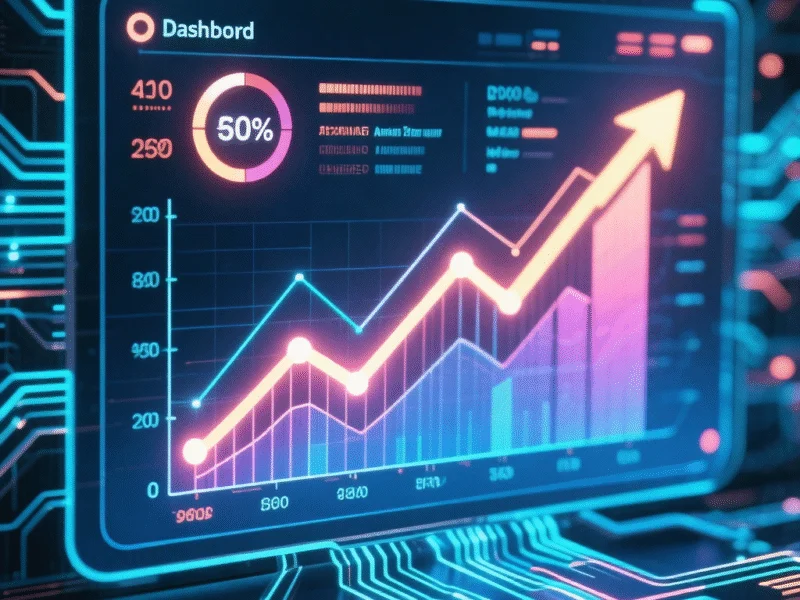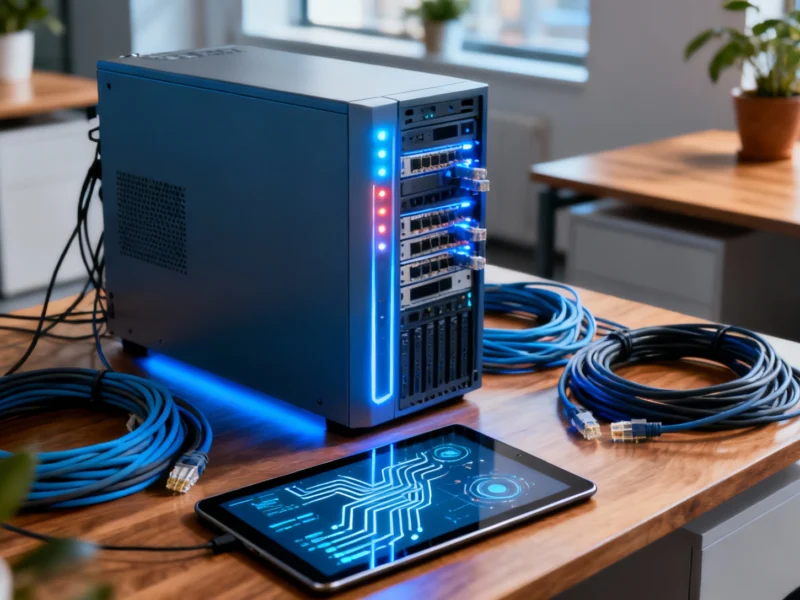The International Monetary Fund has delivered a cautiously optimistic update to its global economic outlook, raising U.S. growth projections for 2025 while drawing striking parallels between today’s artificial intelligence investment boom and the dot-com era of the late 1990s. The international lending organization now projects the U.S. economy will expand by 2% next year, slightly higher than previous forecasts, as AI-driven investments help offset the dampening effects of trade tensions and tariffs.
Revised Economic Projections Show Modest Improvement
In its latest World Economic Outlook report, the IMF upgraded its forecast for U.S. economic growth to 2% in 2025, up from 1.9% in July and 1.8% in April. The organization also expects the global economy to grow 3.2% this year, an improvement from the 3% estimate made three months earlier. These projections represent a modest upward revision but still reflect a significant slowdown from 2024, when the U.S. economy expanded at a robust 2.8% pace.
Despite these improvements, the current forecasts remain below projections made a year ago, indicating that the IMF expects ongoing tariff measures to continue weighing on economic performance. Last October, the organization had forecast 2.2% growth for the U.S. in 2025, suggesting that trade policies have created headwinds that even the AI investment surge cannot completely overcome.
AI Investment Echoes Dot-Com Boom Dynamics
IMF Chief Economist Pierre-Olivier Gourinchas highlighted the remarkable parallels between current technology investment patterns and the late 1990s internet boom. “There are echoes in the current tech investment surge of the dot-com boom of the late 1990s,” he stated during a news conference. “It was the internet then, it is AI now.” This comparison underscores both the transformative potential and the speculative risks associated with the current wave of artificial intelligence investments.
The AI sector’s explosive growth is evident in stock performance, with companies like AMD and Oracle seeing their shares rise approximately 80% this year following their expanded partnership announcement. These gains have significantly boosted American household wealth and fueled consumer spending, creating a virtuous cycle that supports broader economic growth even as trade tensions persist.
Tariff Impacts: Temporary Relief Versus Fundamental Risks
The IMF identified several factors that have helped the U.S. and global economies withstand the initial impact of widespread tariffs imposed earlier this year. According to Gourinchas, “the tariff shock itself is smaller than initially feared, with many trade deals and exemptions” providing缓冲. Most countries have refrained from retaliatory measures, preserving the openness of the global trading system, while private sector companies have demonstrated remarkable agility by front-loading imports and rerouting supply chains.
However, the IMF’s comprehensive report cautions that these factors represent “temporary relief, rather than underlying strength in economic fundamentals.” The organization notes that import price data shows U.S. importers and retailers are currently absorbing most tariff costs rather than passing them to consumers, contradicting predictions from Trump administration officials who expected foreign companies to bear the burden.
Emerging Economic Challenges and Inflation Pressures
Signs of strain are beginning to emerge from the tariff environment, according to the IMF outlook. Core inflation has ticked up to 2.9% from 2.7% a year ago, using the Federal Reserve’s preferred measure. Hiring has nearly ground to a halt, potentially reflecting increased business caution in response to trade policy uncertainty. These developments suggest that the full economic impact of tariffs may still be unfolding.
The ongoing trade tensions between the U.S. and China continue to pose significant risks, particularly after recent threats of 100% duties on all Chinese imports caused sharp stock market declines. The IMF warns that it takes time for changes in international trade patterns to fully play out, meaning the economic consequences of current policies may not be fully visible for months or years.
Global Economic Resilience and Diverging Trajectories
While the U.S. navigates its unique combination of AI-driven growth and tariff-induced challenges, other major economies are following different paths. China has adapted to U.S. tariffs by redirecting exports to Europe and Asia, with currency depreciation making its goods more competitive internationally. The IMF maintains its forecast of 4.8% growth for China this year and 4.2% in 2026, though Gourinchas expressed concern about the country’s increasing dependence on exports amid ongoing real estate sector struggles.
In Europe, Germany is stimulating growth through increased military spending, contributing to an upgraded eurozone growth forecast of 1.2% for this year. The broader global economic landscape reflects both the interconnected nature of modern trade and the varying strategies nations are employing to maintain growth amid geopolitical tensions and technological transformation.
Balancing Optimism with Caution
The IMF’s moderately upgraded forecasts place the organization slightly above many private-sector economists in terms of optimism. The National Association for Business Economics recently projected just 1.8% U.S. growth for this year and 1.7% in 2026, with nearly two-thirds of surveyed economists believing administration tariffs are slowing growth by up to half a percentage point.
This divergence highlights the uncertainty surrounding how economic fundamentals will evolve as AI investments mature and trade policies develop. The potential for a technology bubble similar to the dot-com bust remains a concern, as Gourinchas warned that such an event could sharply reduce business investment and consumer spending. Meanwhile, sectors beyond technology, including the growing electronic design automation market, continue to evolve within this complex economic environment.
As the global economy navigates these crosscurrents, the IMF’s message remains clear: while artificial intelligence investments are providing a welcome boost to growth, the parallels with previous technology booms warrant careful monitoring, and the full impact of trade policy changes has yet to be determined.



